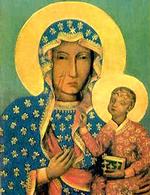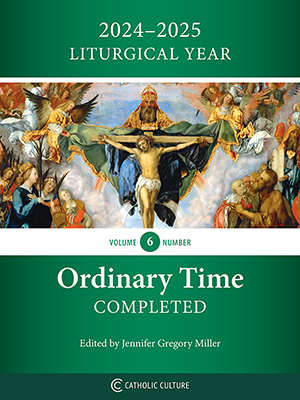The Great Nickel Adventure
by Joyce Kilmer
WHENEVER I READ Mr. Chester Firkins’ excellent poem “On a Subway Express” I am filled with amazement. It is not strange that Mr. Firkins turned the subway into poetry, it is strange that the subway does not turn every one of its passengers into a poet.
There are, it is true, more comfortable means of locomotion than the subway; there are conveyances less crowded, better ventilated, cooler in Summer, warmer in Winter. A little discomfort, however, is an appropriate accompaniment of adventure. And subway-riding is a splendid adventure, a radiant bit of romance set in the gray fabric of the work-a-day world.
The aéroplane has been celebrated so enthusiastically in the course of its brief life that it must by now be a most offensively conceited machine. Yet an aéroplane ride, however picturesque and dangerous, has about it far less of essential romance than a ride in the subway. He who sails through the sky directs, so nearly as is possible, his course; he handles levers, steers, goes up or down, to the left or right. Or if he is a passenger, he has, at any rate, full knowledge of what is going on around him, he sees his course before him, he can call out to the man at the helm: “Look out for that comet's hair! Turn to the left or the point of that star will puncture our sail!”
Now, unseen dangers are more thrilling than those seen; the aéroplane journey has about it inevitably something prosaic. This is the great charm of the subway, that the passengers, the guards, too, for that matter, give themselves up to adventure with a blind and beautiful recklessness. They leave the accustomed sunlight and plunge into subterranean caverns, into a region far more mysterious than the candid air, into a region which since mankind was young has been associated with death. Before an awed and admiring crowd, the circus acrobat is shut into a hollow ball and catapulted across the rings; with not even a sense of his own bravado, the subway passenger is shut into a box and shot twenty miles through the earth.
Once there lived on West One Hundred and Eighty-second Street a man of uncompromising practicality, a stern rationalist. He was as advanced as anything! He believed in the materialistic interpretation of history, economic determinism, and radium; this, he said, with some pride, was his Creed. Often he expressed his loathing for “flesh-food,” more frequently for “Middle Class morality,” most frequently for faith. “Faith is stupidity,” he would say. “Look before you leap! It makes me sick to see the way people have been humbugged in all ages. The capitalist class has told them something was true, something nobody could understand, and they’ve blindly accepted it, the idiots! I believe in what I see—I don’t take chances. I don’t trust anybody but myself.”
Yet every day this man would give himself up to the subway with a sweet and child-like faith. As he sat in the speeding car, he could not see his way, he had no chance of directing it. He trusted that the train would keep to its route, that it would stop at Fourteenth Street and let him off. He could not keep it from taking him under the river and hurling him out into some strange Brooklyn desert. When he started for home in the evening, he read the words “Dyckman Street” on the car window with a medieval simplicity, and on the guarantee of these printed words, placed there by minions of the capitalist class, he gave up the privilege of directing his course. The train, he believed, would not at Ninety-sixth Street be switched off to a Bronx track; the sign told him that he was safe, and he believed it.
So the subway caused him to exercise the virtue of faith, made him, for a time, really a human being. Perhaps it is the sharing of this faith that makes a subway crowd so democratic. Surely there is some subtly powerful influence at work, changing men and women as soon as they take their seats, or straps.
For one thing, they become alike in appearance. The glare of the electric light unifies them, modifying swarthy faces and faces delicately rouged until they are nearly of one hue. Then, the differences of attitude are lost, and attitudes are great instruments of subordination. The ragged bootblack does not kneel at the broker's feet; he sits close beside him, or perhaps, comfortably at rest, watches the broker clutch a strap and struggle to keep his footing.
“Tired clerks, pale girls, street-cleaners, business men, boys, priests and sailors, drunkards, students, thieves”—all gain a new sincerity. Neither the millionaire’s imperiousness nor the beggar’s professional humility can make the train go faster, so both are laid aside. Distinctions of race and caste grow insignificant, as in a company confronting one peril or one God. This is not theory, it is fact. The subway passenger purchases a nickel's worth of speed and he must take with it a nickel’s worth of democracy.
Perhaps it is the youthful romanticism of America which makes our subways so much more exciting than those of Europe. The Englishman is too cautious and too conservative to trust himself away from the earth’s surface more than two minutes at a time. So the trains that run through the London tube are tame, cowardly things. They timidly run underground for half a mile or so and pop their heads out into the air and sunlight or fog at every station.
But the New York subway train is ready to take a chance. It dives into the earth and ‘‘stays under,” like a brave diver, for an hour at a time. And when it does emerge, what splendor attends its coming! There is a glimmer of sunshine at the One Hundred and Sixteenth Street Station; the blue and white of the walls and pillars reflect a light not wholly artificial. Then there is a brief stretch of fantastically broken darkness. Passengers in the first car can see ahead of them, at Manhattan Street, a great door of sunshine. At last there is a strange change in the rumble of the wheels, for the echoing roof and walls are gone, and the train leaves its tunnel not to run humbly over the ground, but to rise higher and higher until it comes to a sudden halt above chimneys and tree tops. To say that the grub becomes a butterfly does not fit the case, for the grub is a slow-moving beast and a butterfly’s course is capricious. Rather, it is as if, by some tremendous magic, a great snake became a soaring eagle.
And how keenly all the passengers enjoy their few seconds in the open air! When they hurried down the steps to the train, they were scornful of the atmosphere they were leaving, they had no thought of tasting wind and watching sunlight. Now they are become, for the moment, connoisseurs of these delectable things; they wish the train would linger at Manhattan Street, not inevitably plunge at once into its roaring cavern. But the train is wise, it knows brevity is essential to all exquisite things, so it gives its passengers only an evanescent glimpse of the glories they have just now learned to appreciate.
This is a part of the great conspiracy of the subway. It is regarded only as a swift and convenient and uncomfortable carrier, and it has no wish to be otherwise interpreted. But those who have studied it know the hidden purposes it constantly and effectively serves. It is showing our generation the value of mankind’s commonest and most precious gifts, by taking them away.
Now, it is good for man or beast to stand on solid ground in the sunlight, breathing clean air. Also fellowship is good, and the talk of friends. We forgot the value of these, we shut ourselves up in dark rooms and we spared no time to social exercise. Then—to punish and cure our folly—came the subway, making our journeys things close and dark in which conversation is a matter of desperate effort. And now how kind and talkative are people who go home together from the subway station after their daily disciplinary ride! They are grateful, too—although it may be subconsciously —for the familiar sights and sounds of the earth, for houses and streets and light that does not come from a wire in a bottle. They take gladly the great common things; they are simple, natural, democratic.
So they spend much of their leisure out of doors, these men and women who are underground two hours every weekday. In the evenings and on Sunday afternoons, they walk the pleasant streets with eager delight. They are curious about the loveliness far beneath which they daily speed. They have learned something of the art of life.
Of course, the subway has its incidental charms—its gay fresco of advertisements, for instance, and its faint mysterious thunder when it runs near the surface of the street on which we stand. But its chief service to man—perhaps its reason for existence—is that it gives him adventure. In this adventure he meets the spirit of faith and the spirit of democracy, which is an aspect of charity. And by their influence he becomes, surely though but for a time, as a little child.
This item 12766 digitally provided courtesy of CatholicCulture.org






